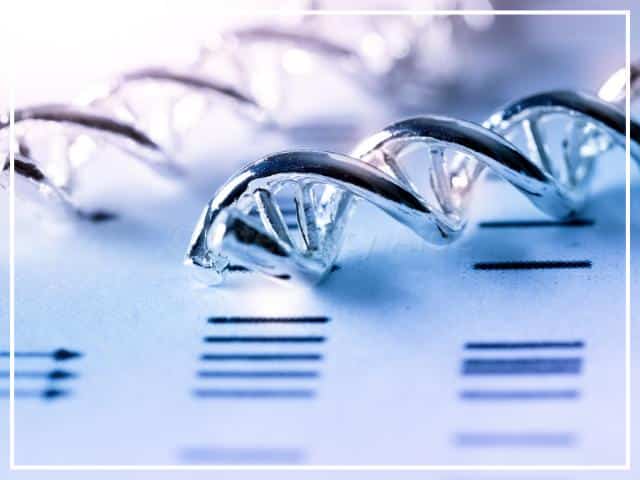Preimplantation genetic testing (PGT) in IVF is used to screen embryos for genetic anomalies before they are transferred to the uterus, thereby reducing the possibility of a failed implantation or miscarriage.
The usage of PGT in IVF has significantly increased over the past few years and so has the number of clinics offering PGT in the US (1).
Researchers found that the live birth rate per embryo transfer for PGT cases was much higher than that for non-PGT cases in all 4 years.

Is PGT testing worth the cost?
The cost of PGT in IVF can easily double your bill but is it worth it? If you are a young couple with no history of genetic disease and doing your first IVF cycle, you may not find PGT to be highly useful.
It is mostly recommended:
- If the female age is over 35 years
- If either of the parents has a family history of genetic diseases
- The couple has had recurrent miscarriages
Sometimes, PGT is also utilized to have a child with a chosen gender.
What are the types of Pre-implantation genetic testing?
PGT-A – Aneuploidies (Chromosomal Abnormalities)
Formerly known as preimplantation genetic screening (PGS), PGT-A is the most commonly used form of PGT and it helps to determine if an embryo has a normal number of chromosomes—46.
Embryos with normal number of chromosomes are known as euploid embryos. Dr. Colin Lee, one of the most highly regarded experts for PGT in Asia, has demonstrated IVF success rates of 82.9% with the transfer of a single euploid embryo.
Women of advanced age have a higher risk of embryos with abnormal numbers of chromosomes (aneuploid embryos), which are more likely to result in miscarriages or failed IVF cycles.
PGT-A may be recommended if the female partner is over 35 years of age, if you had multiple miscarriages or failed IVFs, or if you already had a pregnancy with chromosomally abnormal embryo.
PGT-M — Monogenic/Single-Gene Disorders
Previously called preimplantation genetic diagnosis (PGD), PGT-M is used to detect single gene disorders in the embryo.
If either of the parents has a family history of diseases like cystic fibrosis, sickle cell anemia or hemophilia A, the use of PGT-M may be advised to avoid passing on the disease to the next generation.
PGT-SR—Chromosomal Structural Rearrangements
PGT-SR is used in cases of translocation or inversion of chromosomes in one of both the partners. These individuals have higher chances of producing embryos that have missing or extra chromosome pieces, which may result in miscarriage.
How is Preimplantation Genetic Testing done?
Once the embryos reach the blastocyst stage in 5-6 days, a biopsy is done to extract one or two cells, so they can be checked for genetic/chromosomal abnormalities (2).
Below are the main techniques used to assess the biopsied cells:
- Next-generation sequencing (NGS): It is the most common method of genetic testing, which is used for PGT-A and PGT-M. It provides comprehensive information about the genetic makeup of embryos and is less-expensive and much faster than other methods (3).
- Fluorescence in situ hybridization (FISH): FISH is an older technique where specific DNA sequences are labeled with fluorescent probes and analyzed under a microscope. It was primarily used in PGT-A to detect aneuploidies by counting the number of chromosomes present in the embryo
- Polymerase chain reaction (PCR): PCR was used in PGT-M to detect single gene disorders. It is done by creating copies of a small amount of the genetic material (known as amplification) and analyzing the DNA sequence of genes associated with the disorder.
- Comparative genomic hybridization (CGH): CGH compares the DNA of the embryo to a normal DNA sample to identify gains or losses of genetic material. CGH was previously used for PGT-A, but due to its low-resolution and high cost, it has largely been replaced by NGS.
The results typically take around two weeks, during which the embryos are kept safely frozen in the lab.
Dr. Lam, a leading IVF specialist in Malaysia, explains the process of PGT:
PGT success rate
The live birth rates in PGT-A embryo transfers have been found to be significantly higher than non-PGT-A cycles (4).
Even in patients with recurrent pregnancy loss, the clinical pregnancy rates were found to be higher with PGT-A (73%) as compared to those without PGT-A (61%). Researchers also found that the possibility of losing the pregnancy was also lowered in the PGT-A group (5).

A study published in the Journal of Translational Medicine found that PGT helped reduce the rate of early miscarriage from 20.2% to 12.8%, preterm birth from 17.3% to 8.6% and low-birth weight in babies from 19.3% to 4.9% (6).
Risks of PGT
The potential risks and limitations of the PGT procedure include:
- Embryo damage: Although biopsies are generally safe, you cannot rule out the risk of damaging the embryo while extracting the cells.
- Mosaic embryos: An embryo can have cells with different genetic compositions, which can result in misleading reports from PGT
- False reporting: A false result can cause you to the discard a potentially good embryo and vice versa.
- Limited testing: PGT will screen for specific genetic abnormalities as specified by the chosen testing methods while other complex genetic conditions may be left out.
Some of our IVF specialists in Malaysia, are able to perform PGT-A and PGT-M with a single biopsy, eliminating some of that risk.
Preimplantation Genetic Testing Cost
The cost of PGT varies with factors like clinic, lab quality, type of PGT (A, M, SR), and the number of embryos being tested.
The general range of cost for PGT is
| Average cost of PGD | Average cost in USD | |
|---|---|---|
| USA | $4,000 – 10,000 | $4,000 – $10,000 |
| Canada | CAD$3,500 – 7,000 | $ 2,500 – $5,000 |
| Australia | AUD$3,000 – 5,500 | $ 2,000 – $4,300 |
| Europe | €2,500 – 4,000 | $ 2,700 – $3,200 |
| Thailand | THB 90,000 – 200,000 | $ 2,500 – $5,500 |
| India | INR 45,000 – 120,000 | $ 550 – $1,500 |
| Mexico | MXN 42,000 – 65,000 | $2,500 – $4,000 |
| Malaysia | MYR 10,000 – 25,000 | $2,000 – $5,200 |
| Singapore | SGD 4,000 – 6,000 | $3,000 – $4,500 |
For more information on the cost of pre-implantation genetic testing with IVF and to find the best-priced IVF clinic and right doctor for your treatment, get in touch.
References:
- Roche, K., Racowsky, C., & Harper, J. (2021). Utilization of preimplantation genetic testing in the USA. Journal of assisted reproduction and genetics, 38(5), 1045–1053. https://doi.org/10.1007/s10815-021-02078-4
- Flinter F. A. (2001). Preimplantation genetic diagnosis. BMJ (Clinical research ed.), 322(7293), 1008–1009. https://doi.org/10.1136/bmj.322.7293.1008
- Illumina, Introduction to NGS: https://www.illumina.com/science/technology/next-generation-sequencing.html
- Sadecki, E., Rust, L., Walker, D. L., Fredrickson, J. R., Krenik, A., Kim, T., Weaver, A. L., & Zhao, Y. (2021). Comparison of live birth rates after IVF-embryo transfer with and without preimplantation genetic testing for aneuploidies. Reproductive biomedicine online, 43(6), 995–1001. https://doi.org/10.1016/j.rbmo.2021.09.011
- Preimplantation genetic testing for aneuploidy (PGT-A) reduces miscarriage and improves live birth rates in recurrent pregnancy loss patients. DOI: https://doi.org/10.1016/j.fertnstert.2019.07.1141
- Ma, S., Liao, J., Zhang, S., Yang, X., Berthold Hocher, Tan, J., Tan, Y., Hu, L., Gong, F., Xie, P., & Lin, G. (2023). Exploring the efficacy and beneficial population of preimplantation genetic testing for aneuploidy start from the oocyte retrieval cycle: a real-world study. Journal of Translational Medicine, 21(1). https://doi.org/10.1186/s12967-023-04641-2
Reviewd by: Dr. Meenakshi, PhD